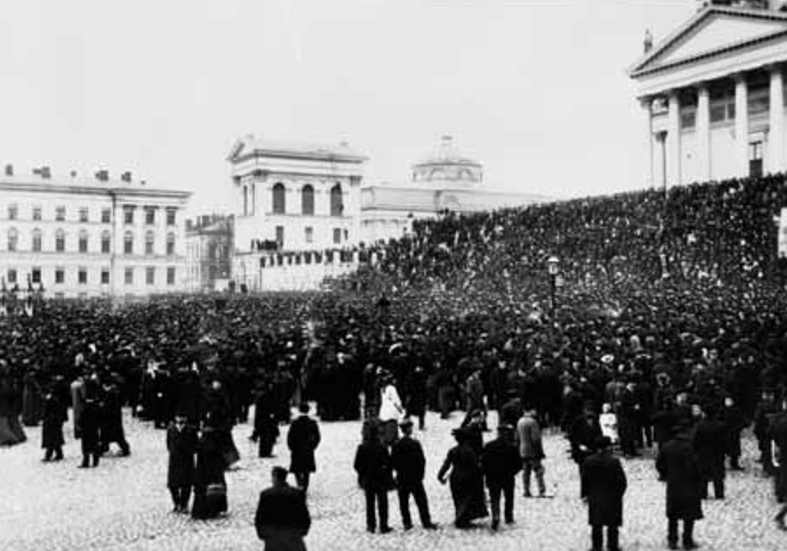by ERIC BLANC
 Crowds during the general strike in Helsinki, Finland, 1905
Crowds during the general strike in Helsinki, Finland, 1905
In the past century, histories of the 1917 revolution have usually focused on Petrograd and Russian socialists. But the Russian empire was predominantly made up of non-Russians — and the upheavals in the imperial periphery were often just as explosive as in the center.
Tsarism’s overthrow in February 1917 unleashed a revolutionary wave that immediately engulfed all of Russia. Perhaps the most exceptional of these insurgencies was the Finnish Revolution, which one scholar has called “Europe’s most clear-cut class war in the twentieth century.”
The Finnish Exception
The Finns were unlike any other nation under tsarist rule. Annexed from Sweden in 1809, Finland was allowed governmental autonomy, political freedom, and eventually even its own democratically elected parliament. Though the tsar attempted to limit this autonomy, political life in Helsinki resembled Berlin far more than Petrograd.
In a period when socialists elsewhere in imperial Russia were obliged to organize in underground parties and were hunted down by secret police, the Finnish Social Democratic Party (SDP) operated openly and legally. Like German Social Democracy, the Finns from 1899 onwards built up a massive working-class party and a dense socialist culture with its own assembly halls, working women’s groups, choirs, and sports leagues.
Politically, the Finnish workers’ movement was committed to a parliamentary-oriented strategy of patiently educating and organizing workers. Its politics were initially moderate: talk of revolution was rare and collaboration with liberals was common.
But the SDP was unique among Europe’s mass legal socialist parties in that it became more militant in the years before World War I. Had Finland not been part of the tsarist empire, it is likely that the Finnish Social Democracy would have evolved down a similarly moderate path to most Western European socialist parties, in which radicals were increasingly marginalized by parliamentary integration and bureaucratization.
But Finland’s participation in the 1905 Revolution veered the party to the left. During the November 1905 general strike, one Finnish socialist leader marveled at the popular upsurge:
We live in a wonderful period of time … Peoples who were humble and satisfied to bear the burden of slavery have suddenly thrown off their yoke. Groups who until now have been eating pine bark, now demand bread.
Links for more
